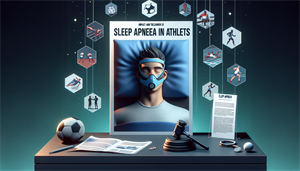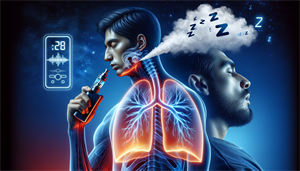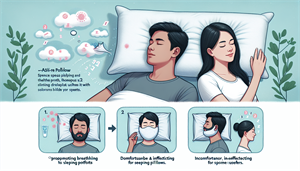
Athletes with Sleep Apnea
Athletes with sleep apnea face an often unseen hurdle that can drastically impact their performance and overall health. This article unpacks the silent challenge many athletes confront, showcasing both the severity of sleep apnea’s effects and the powerful ways in which these sports professionals tackle the condition to maintain their competitive edge.
Key Takeaways
-
Sleep apnea, especially obstructive sleep apnea (OSA), is prevalent among athletes due to factors such as obesity and certain genetic predispositions, and it is highly common in sports such as American football.
-
Notable athletes like Shaquille O’Neal and Reggie White have dealt with sleep apnea, which has significant implications for athletic performance including sleep deprivation and increased risk of injuries due to fatigue and cognitive impairments.
-
Apart from medical treatments like CPAP therapy, athletes can manage sleep apnea and improve overall performance by practicing good sleep hygiene and maintaining a healthy lifestyle that includes regular exercise and balanced nutrition.
The Prevalence of Sleep Apnea in Athletes
Sleep apnea, a disorder marked by frequent disruptions in breathing during sleep, is quite prevalent. It’s not an elite club that anyone strives to be a part of, but many athletes, especially those in sports like football, have unwittingly found themselves a part of it. Approximately one in three NFL players are affected by sleep apnea, and even among retired football players, the prevalence of sleep disordered breathing is as high as 60%.
What factors make athletes prone to sleep apnea? The answer lies in the nature of the most prevalent form of this disorder: Obstructive Sleep Apnea (OSA). Obstructive Sleep Apnea (OSA), the most prevalent form of sleep apnea, involves repeated partial or complete airway blockage during sleep. What typically causes these blockages? Conditions that obstruct airflow through the upper airways during sleep, such as the backward movement of the tongue and the presence of excess weight and obesity. Such a medical condition, known as a common sleep disorder, is often diagnosed through an overnight sleep study, or nocturnal polysomnography, a test that monitors heart, lung, and brain activity, as well as breathing patterns during sleep. The treatment for this sleep disorder ranges from the use of oral appliances to positional therapy and even CPAP (Continuous Positive Airway Pressure). Recognizing the risk factors is the first step in managing OSA.
Sleep Apnea Risk Factors for Athletes
Obesity, a common risk factor, significantly increases the likelihood of sleep apnea in athletes. However, weight isn’t the only factor to consider. Genetic factors play a significant role in the development of OSA, with both OSA and its severity having a heritable component. Furthermore, certain sports pose a higher risk for the development of sleep apnea. American football players, contact sports athletes, and sumo wrestlers have all been found to be at an increased risk of developing athletes sleep apnea. It is also important to note that women develop sleep apnea, although the prevalence may vary depending on various factors. This leads us to wonder, how do athletes manage this condition?
Notable Athletes Confronting Sleep Apnea
A number of well-known athletes have bravely faced their sleep apnea diagnosis and have taken steps to manage it. Some of the prominent names who have not only decided to seek treatment but have also publicly shared their experiences include: Shaquille O’Neal, Reggie White, Warren Sapp, and Percy Harvin. Their stories provide a glimpse into the real-life impact of sleep apnea on athletes.


